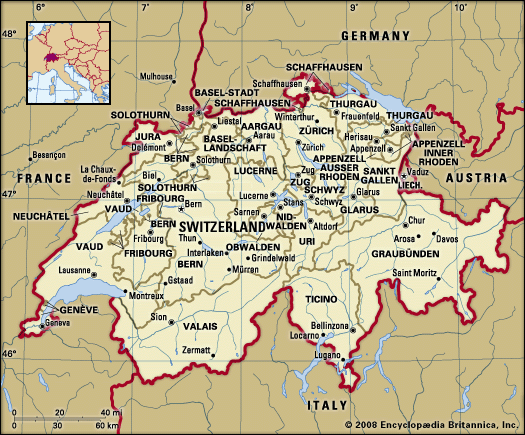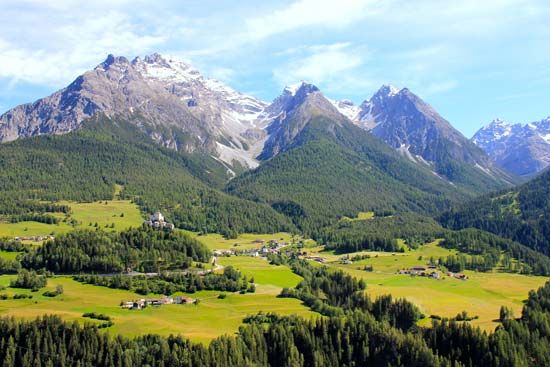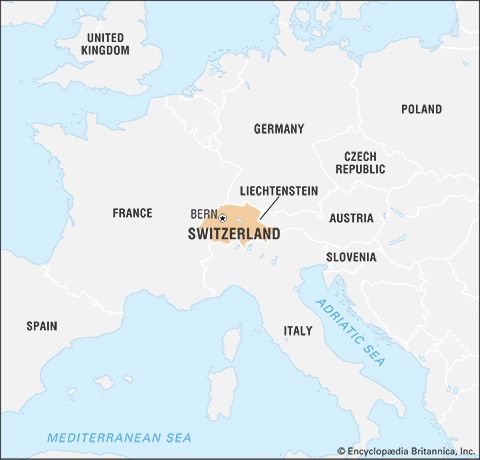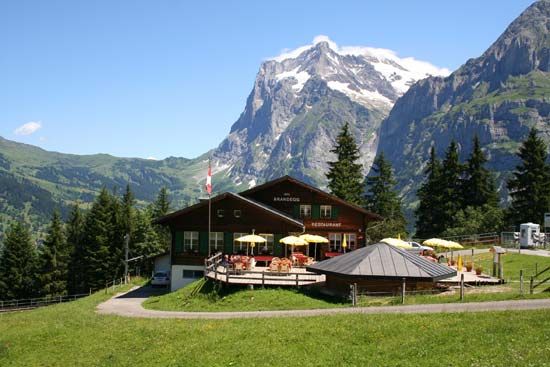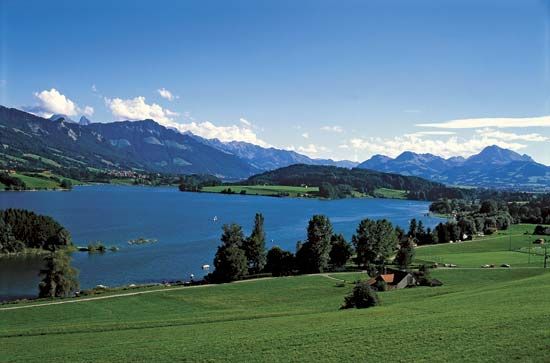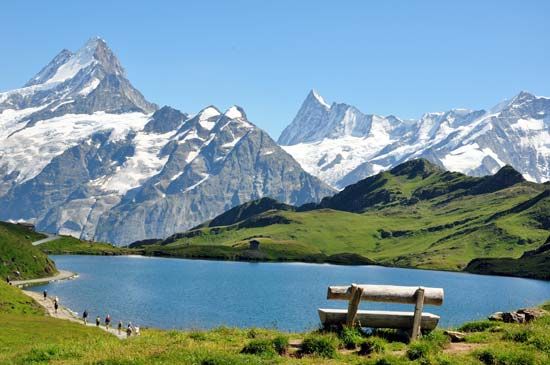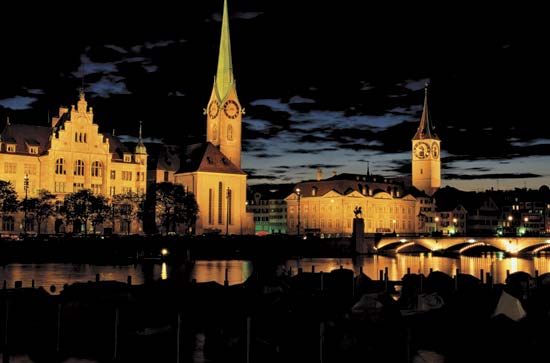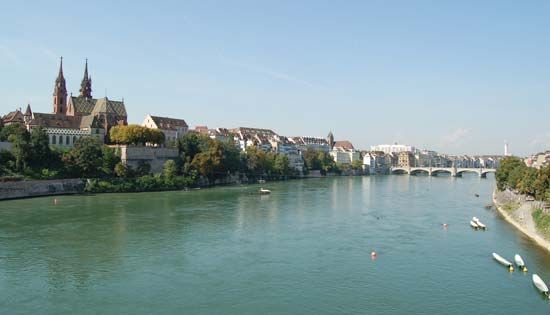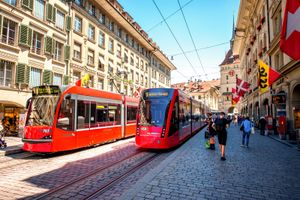Animal life
Our editors will review what you’ve submitted and determine whether to revise the article.
News •
Switzerland’s animal life is primarily Alpine, but a mixture of species familiar to southern and north-central Europe is also found. Animal life is protected, except during a brief annual hunting season. Alpine tourists may observe marmots, which live in the high meadows, and chamois. Large herds of the round ibex, which had died out in the Swiss Alps and has since been reintroduced, populate several areas, especially in the Bernina region of Graubünden (canton) and in the Saastal of Valais. In the forests there are deer, rabbits, foxes, badgers, squirrels, and many varieties of birds, including eagles, while lake and river trout may be found but are no longer as abundant as in the past. Snakes and lizards are concentrated in the south, but insects, in great variety, are diffused throughout the country.
People
To survive as a cohesive unit and to protect the neutrality that has been their safeguard, the disparate elements of the Swiss people have had to learn a mutual cooperation. Their outlook has been shaped largely by economic and political necessity, which has made the Swiss public realistic, cautious, and prudent in accepting innovation and creative in the use of their resources. Switzerland’s human resource has been effectively educated and efficiently utilized to transform what was a predominantly mountainous, rural, and landlocked country with limited natural resources into one of the most diversified and important industrial and commercial countries in the world.
Ethnic groups and languages
Most of the major cultural regions of western continental Europe—German, French, and Italian—come into contact in Switzerland. Thus, one of the country’s distinctive features is the variety of its languages. The Swiss constitution recognizes German, French, and Italian as official languages. Since 1996 Romansh (Rhaeto-Romance), a linguistic relic preserved in the mountainous regions between the Gotthard massif and the eastern Alps, has had official status at the federal level for communicating with Romansh-speaking persons (it had been designated as an official “national” language in 1938). At the beginning of the 21st century, more than three-fifths of the total population spoke German, one-fifth French, about one-twelfth Italian, and less than 1 percent Romansh. Nearly one-tenth of the population spoke a nonofficial language, with people of Croatian, Portuguese, Serbian, and Spanish descent most prevalent in this category. The country’s ethnic breakdown largely mirrors its linguistic divisions. Foreign residents make up about one-fifth of the country’s total population, and in some cantons the proportion is considerably higher. For example, in Geneva more than one-third of residents are foreigners. The foreign-born population in Switzerland increased substantially in the 1990s, when the country provided refuge to those fleeing the violence in Bosnia and Herzegovina and in Kosovo.
Religion
Switzerland also exhibits considerable religious diversity. However, the distribution of religions does not coincide with that of languages, as the population shifts brought on by industrialization resulted in greater mixture of religions. Roman Catholics slightly outnumber Protestants, and there is a small but significant Muslim population—mainly of Turkish or Balkan origin—and a tiny Jewish community.
The constitution of 1874 guaranteed full religious liberty but repeated the 1848 constitution’s prohibition of settlement by Jesuits (members of the Roman Catholic Society of Jesus) and their affiliated societies. This anti-Jesuit article was repealed in a national referendum in 1973. In 2009 the passage of a referendum to outlaw the construction of minarets (towers that feature in the design of many mosques) highlighted widespread misgivings about the presence of Muslims in Switzerland. The minaret ban had been promoted by the conservative Swiss People’s Party.
Although religion has been pivotal in shaping the country, church attendance and religiosity have declined substantially; about two-fifths of Roman Catholics and one-half of Protestants attend church regularly. About one-eighth of Swiss citizens profess no religious affiliation, a figure that increased in the last decades of the 20th century.


